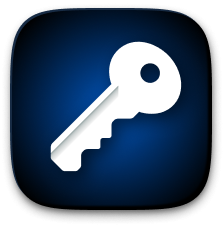Five helpful iPhone security features you should know about

With every operating system upgrade, Apple’s iOS seems to add another layer of security. It started in 2013 with the introduction of Touch ID, a fingerprint sensor built into the iPhone 5S, and it continued in iOS 8 with stronger encryption.
Now, in iOS 9, Apple upped the level of security again.
Here are a few security features that you should know about as an iPhone user to better equip you to live as secure as you can.
Six-digit passcodes
A passcode creates a barrier between your device and anyone who may have it, whether it’s lost or stolen.
In iOS 9, the passcode is now six digits instead of four. That means the number of possible combinations is one million instead of 10,000.
Erase data after 10 failed passcode attempts
If you want added assurance that your data will be safe if your phone falls into the wrong hands, you can set it to automatically erase all data after 10 failed passcode attempts.
Just go to the Touch ID and Passcode section of Settings.
Two-step verification
Do you want to make an app purchase from a new device, or sign in to iCloud?
You’ll now have to take two steps instead of one. Two-step verification means Apple will send a verification code to an already-verified device, and once received, it can be used to sign in from a new device.
This is now a common method used by a number of applications to help thwart fraudulent attempts to acquire passwords.
Limit ad tracking
In some apps, ads are delivered to you based on your interests. Advertisers can also limit the number of times you may see or hear an advertisement and measure how effective their ad campaign is within an iPhone app.
They’re able to do this through an Advertising Identifier provided by Apple.
If you don’t want to play ball with Apple’s advertising service, you can turn on Limit Ad Tracking in the Settings and Privacy section of your phone. Apple then asks apps to remove you from ad tracking.
Family sharing
You’ve heard the horror stories of in-app purchases gone wrong at the hands of a young child.
Worry no more when you let your child use the family tablet. Children can now have their own Apple ID, and iOS Family Sharing includes built-in tools like “Ask to Buy,” which lets parents approve in-app purchases or App Store purchases.
Adults also get visibility into the child’s online activity.
Go to iCloud settings on your iOS device and tap Set Up Family Sharing to get things set up.
All of these features can complement the use of a password manager like mSecure. You can store all of your private information in mSecure and have the confidence of 256-bit Blowfish encryption.
Learn more about the mSecure iPhone app here.
Related Reading
You’ve lost your iPhone. Now what?

Our phones hold it all: passwords, family photos, private messages. You only need to look at recent news coverage of the battle between the FBI and Apple to see just how critically we depend on our phones in today’s society, and how important they are to privacy. But at some…
 mSecure
mSecure